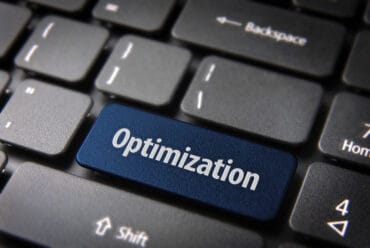
The bloated tech stack is an understandable consequence of companies scrambling to operate during the pandemic. But now, it’s essential to be more mindful of how tech is being brought on and invested in.
Over the last 18 months, enterprises had to adopt new tools and technologies that allowed them to collaborate remotely during the pandemic. Whether it was for project management, video conferencing and communications, automating tedious tasks, or anything in between, there’s a strong likelihood new software was adopted to ease the transition to remote work. According to a recent survey, Zoom and Microsoft Teams were the most popular collaboration tools used during the pandemic, but the list is lengthy; it also includes Cisco Webex, Skype, Google Meet, Slack, and more. Forty-two percent of respondents reported suffering from video conferencing drain, more commonly known as ‘Zoom fatigue.’ But it’s not just Zoom that’s draining employees. It’s the complexity of new technology adoption. It is the bloated tech stack that is causing problems.
While companies won’t be able to eliminate everything in their current tech stacks, there are smarter ways to go about building a tech stack that enables efficiency, encourages productivity, and eases workflows. It requires being integrated, horizontal, and easy to use and will be a crucial differentiator in the future of work.
The problem with today’s tech stack
The great resignation is upon us. After over a year of remote working, social distancing, and Zoom happy hours, employees are feeling antsy and are actively exploring job options. There are countless reasons why this shift in the working world is happening now, but what should matter to employers is understanding how they can create a supportive environment that encourages retention, not resignation. Much of this lies in combating the burnout and fatigue epidemic plaguing workforces, and while this can be managed through a number of approaches, the company tech stack plays a big part in it. The modern tech stack should make it seamless, rather than more difficult, to get work done efficiently and effectively.
While many organizations had the right intentions during the pandemic in adopting new technology, employees felt it was too much to handle. According to our recent research, almost a third of respondents said they use between 6-10 applications to get their job done any given day. What’s more, 35% reported switching back and forth between different applications 3 to 4 times per hour. This interrupts their workflow, impacts their efficiency and ultimately, hurts the company’s bottom line. To combat this, it’s important to focus on tools that integrate with one another and are efficient enough for the current workforce as we transition to a more permanent hybrid way of working.
Enter the business enablement tech stack.
Powering the next era of work through connectivity
The business enablement tech stack is emerging as the tech stack that empowers people to do better work more efficiently. The tech stack includes solutions that are company-wide and support teams and individuals in contributing high-value work. Solutions from team collaboration to productivity are included, but content enablement is often the thread tying everything together. A content enablement platform is an infrastructure connecting content stored across all company systems directly to the people who need it. This offers value company-wide, not just within a single department. It decreases the number of times an employee needs to switch between applications allowing them to better do their jobs and drive results for a company. Considering 40% of workers report feeling overwhelmed and frustrated by the number of tools they need to use to do their jobs, switching to more connected software solutions is a necessity as we further move into the next era of work.
When employees are doing good work, enterprises are doing good work. The efficiency gains from a tech stack powered by connected content will have massive beneficial impact beyond just the individual layer: salespeople are directly served the latest marketing materials, which means marketing no longer needs to create one-off presentations or assets, connecting content through integrations with existing apps also helps IT to get more value from tech investments. And all of this means the business can ultimately focus on scalability and growth rather than combating growing pains and internal fires. Every single employee, from those in the administration department to the C-Suite, will be equipped with the content needed to do their best work. With all this individual-level work optimized, the gains for the business will undoubtedly be enormous.
The bloated tech stack is an understandable consequence of the recent state of the work. When the pandemic happened, many didn’t have the option to ease into learning and integrating new technologies. Companies had to adjust quickly to the tsunami of remote working. But now, as we transition into our new world of work, it’s essential to be more mindful of how tech is being brought on and invested in. Recent projections note that organizations are looking to spend almost $656 billion on future of work technologies in 2021. There are countless technologies in the market that will help companies stay connected, but it’s the ones that integrate, are beneficial to the entire company, and are intuitive to use that will make up the business enablement tech stack. Those are the tools that will not only help retain talent but also benefit businesses immensely.



























